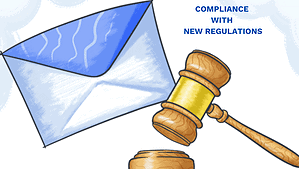Email authentication protocols like SPF (Sender Policy Framework), DKIM (DomainKeys Identified Mail), and DMARC (Domain-based Message Authentication, Reporting, & Conformance) play crucial roles in ensuring the security and integrity of email communications. These protocols help verify that emails are sent from legitimate sources and protect against spam and phishing attacks.
1. SPF (Sender Policy Framework)
SPF is an email validation system designed to prevent spam by detecting email spoofing. It allows the domain owner to specify which mail servers are permitted to send email on behalf of their domain.
How it works:
•The domain owner publishes an SPF record in the DNS, listing authorized mail servers.
•When an email is received, the recipient’s mail server checks the SPF record to verify if the email is sent from an authorized server.
•If the email fails the SPF check, it is marked as potentially fraudulent.
Why it matters:
•Prevents spoofing: Ensures emails are sent from legitimate sources.
•Reduces spam: Helps filter out spam emails that claim to be from your domain.
•Improves deliverability: Increases the chances of legitimate emails reaching the inbox.
2. DKIM (DomainKeys Identified Mail)
DKIM is an email authentication method that allows the receiver to check that an email claimed to have come from a specific domain was indeed authorized by the owner of that domain.
How it works:
•The domain owner generates a pair of cryptographic keys: a private key and a public key.
•The private key is used to sign outgoing emails, adding a unique DKIM signature to the email header.
•The public key is published in the DNS.
•The recipient’s mail server uses the public key to verify the DKIM signature.
Why it matters:
•Ensures integrity: Verifies that the email has not been altered during transit.
•Confirms authenticity: Authenticates that the email was indeed sent by the domain owner.
•Boosts reputation: Enhances the domain’s reputation, improving email deliverability.
3. DMARC (Domain-based Message Authentication, Reporting & Conformance)
DMARC builds on SPF and DKIM by adding a policy layer and providing a way for domain owners to receive reports about email authentication activities.
How it works:
•The domain owner publishes a DMARC policy in the DNS, specifying how emails that fail SPF and DKIM checks should be handled (e.g., reject, quarantine, or do nothing).
•DMARC also enables the domain owner to receive reports on the results of email authentication checks.
Why it matters:
•Policy enforcement: Allows domain owners to specify how to handle emails that fail authentication.
•Visibility and reporting: Provides reports on email authentication activities, helping domain owners identify and mitigate abuse.
•Enhanced security: Combines SPF and DKIM for a comprehensive email authentication strategy, significantly reducing phishing and spoofing.
Conclusion
Implementing SPF, DKIM, and DMARC is essential for protecting your email domain from abuse. These protocols work together to authenticate emails, ensuring they are sent from authorized sources and have not been tampered with. By doing so, they help maintain the trustworthiness of your email communications, protect against phishing attacks, and improve email deliverability.
In KVN Mail we do guide to setup full authentication for better delivery.
For more detailed information, you can refer to the following sources:
•Google Postmaster Tools – SPF, DKIM, DMARC
•Cisco – Understanding Email Authentication Protocols: SPF, DKIM, and DMARC





